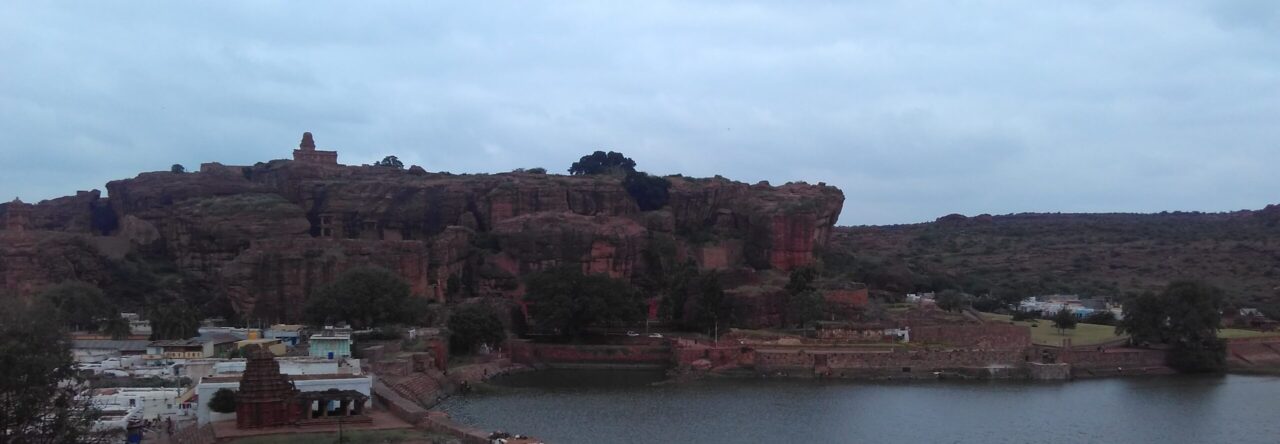
This Mahashivaratri day, I bring to you the story of Lord Shiva as ‘Narumbunathan’ (Naarum Poo meaning fragrant flower and Nathan meaning the Lord) who has his abode at Tiruppudaimarudur near Tirunelveli. The Lord is believed to have existed in this place from eons before and had blessed Lord Indra to get relief from a curse.
There are various legends associated with this shrine and I shall relate two of them.
The ‘Marudha’ tree called ‘Arjuna’ in Sanskrit (Botanical name Terminalia Arjuna) is the Sthala Vruksham in three Shiva temples and they are in Srisailam in Andhra Pradesh, Tiruvidaimarudur in Thanjavur District and Tiruppudaimarudur in Tirunelveli District. Srisailam is referred to a ‘Mallikarjunam’, Tiruvidaimarudhur as ‘Madhyaarjunam’ and Tiruppudaimarudhur as ‘Putaarjunam’.
‘Pudai’ in the Tamil language, indicates a hole or burrow. The first legend is about that which is incorporated in the name of the place.
It was a thick forest of Marudha trees. The Pandyan King Veeramarthanda Varma was on his usual hunting expedition. There were herds of deer roaming in the forest and the king went with the intention of hunting deer. He aimed his arrow at a particular deer and as he let it go from the bow, it hit the deer and it ran into a huge burrow in a giant Marudha tree and vanished.
The king’s men rushed to the tree and curious to see where the deer had vanished, started cutting the tree with axes and suddenly an axe hit something and blood squirted out. Shell-shocked by this eerie happening, they carefully looked into the burrow and found a Swayambu Linga of Lord Shiva, with a cut mark of the axe, blood and the mark of a deer’s hoof. It was then that Veeramarthanda Varma understood that it was indeed Lord Shiva who had come in the form of a deer and shown where he was located.
The king, his body trembling with fear and devotion, prayed fervently to the Lord to forgive his action and built a temple at that spot. The name Marudhur indicates the forest of Marudha trees. As the Lord was found in the ‘Pudai’ of the Arjuna tree, he was called ‘Putarjuneswarar’. The Lord is offered sandal oil to heal the wound caused by the axe.
It would be of interest to mention that the bark of this Arjuna tree is said to be an excellent cardiac medicine in Ayurveda.
The legend of how the name of the Lord came to Narumpoo Nathan is equally interesting. One of the eighteen Siddhas was Karuvoor Siddhar or Karuvoorar. He was visiting Shiva temples on a pilgrimage. As he reached the banks of the Tamraparani river, the river was flowing with strong currents. Karuvoorar had spotted the Shiva temple on the opposite bank of the river but could not cross the river. He also did not know the name by which the Lord was addressed in that temple.
As he stood yearning to cross the river and see his beloved Lord Shiva, the fragrance of the flowers from where the temple was situated wafted in the wind to where Karuvoorar was standing.
Karuvoorar cried out aloud in anguish, “O Naarum poo Natha (Lord of the fragrant flowers) are you not listening to my prayer? I need to cross this river and see you.”
He heard a divine voice replying to him. “Step into the river, do not look back and keep coming”, it said.
The flow of the water slowed down to a considerable extent that Karuvoorar crossed the river. The Siddhar went inside the temple and was surprised to see the Lingam leaning forward to its left side and was puzzled. Then he heard the voice of Lord Shiva. “You asked me if I was not listening to your prayer. I did and leaned to hear your grievance more clearly!”
Karuvoorar was overwhelmed and requested the Lord to remain in the same posture and hear the grievances of all who came to see Him.
From that time the name of the Lord became Narumpoonathan or Narumbunathan and the Lingam is seen leaning even to this day. The Goddess is named Gomathi Ambal.
The original structure of the temple is understood to be of the 8th to 9th century CE period. The temple is said to have been patronized by the Cholas, Pandyas, the Cheras (who had Cheran Mahadevi which is a nearby town as their second capital), Vijayanagara Kings and the Nayaks.
The temple has a Gopuram (tower) with five tiers and called Chitra Gopuram aptly as it contains beautiful paintings of the 16th century in the interior walls of each of its tiers. The paintings depict the happenings of events of those periods and also paintings of stories from the Puranas.
This place is also referred to as Dakshina Kashi.
Let us pray to Shri Narumbunathar and Mother Gomathi Ambal this Shivaratri day!

N.Janarthanan
Good and simple to understand and read
krvidhyaa
Thank you Prakash!
Vidhya Sivakumar
Thank you for sharing this wonderful story on the auspicious day of Mahashivaratri ⭐
krvidhyaa
Thank you Vidhya!
C NARAMBUNATHAN
Nicely covered two episodes in an easy and elegant style on this Mahasivarathri day
krvidhyaa
Thank you for the inspiration Sir!
Badri
Very nicely narrated ma!
krvidhyaa
Thank you Badri!
CNARAMBUNATHAN
Nicely presented in an elegant manner on Mahasivarathri day.
Kudos to Vidhyaa
krvidhyaa
Thank you Sir!
Lalithambal Natarajan
Narumpoonathan must have heard the prayer of people even on this Shivrathrida and blessed them…nice narration
krvidhyaa
Yeah!!
Vidya @ Manomayi
Very good narration dear Vidya! Enjoyed reading it….tku very much! 👏👏👏🤝🤝💐💐🕉️🙏
krvidhyaa
Thank you Vidya!!
Gomathi S
Very interesting story nicely narrated. When I heard the name of the Lord , I thought it was something related to ‘Narambu’ the nerve. The truth is so different !!!!
Thank you Vidhya.
krvidhyaa
Thank you Goma!